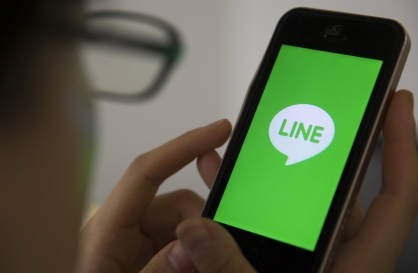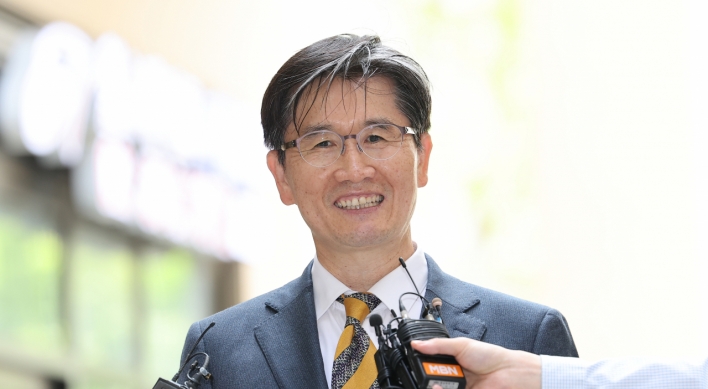The recent flurry of news about North Korea shows how challenging it is to deal with the unruly and dangerous regime. Digesting this spate of news leaves one wondering whether there is a breakthrough in sight, let alone an eventual solution, regarding the North’s military threat.
One development came in The Hague, Netherlands, where the leaders of South Korea, the U.S. and Japan reaffirmed their unified stance on North Korea. Among other things, they agreed to push for the reopening of the six-nation talks on the North’s nuclear weapons development.
On the surface, the agreement to convene the meeting of the three countries’ chief delegates to the six-nation talks seems a good first step to revive the negotiations, which have been suspended since 2008. Also involving the North’s socialist allies China and Russia, the multilateral talks had been touted as the most effective scheme to resolve the North’s nuclear threat.
The three leaders in The Hague restated their longstanding commitment to achieving the ultimate goal of the six-party negotiations ― removing all of the North Korean nuclear weapons programs in a “complete, verifiable and irreversible manner.”
A closer look at the agreement between President Park Geun-hye and her U.S. and Japanese counterparts Barack Obama and Shinzo Abe, however, does little to reduce skepticism. The agreement lacks substance regarding how to enlist support from China and Russia and get Pyongyang back to the negotiating table.
The U.S. and China already have different positions on reopening the six-nation talks. Obama insists that the talks cannot proceed unless the North first takes action on its nuclear programs, whereas Chinese President Xi Jinping calls for unconditional resumption of the negotiations.
The latest rift between the U.S. and Russia caused by Moscow’s annexation of Crimea also casts doubt on the possibility of getting the six-nation talks back into full operation any time in the near future.
The biggest challenge, of course, will be how to persuade or pressure North Korean leader Kim Jong-un to accept negotiations. It does not appear an easy task considering the regime’s belligerence.
North Korea again resorted to a show of force on Wednesday, this time test-firing two mid-range ballistic missiles into the East Sea. Apparently, the latest provocation was timed to coincide with the three leaders’ meeting in The Hague, which focused on the North, and the ongoing South Korea-U.S. military exercise.
It is seen as a deliberate measure since the North has been escalating the level of its provocations. The latest missile launch comes after about one month of large-scale test-firing of short-range missiles, artillery and rockets since Feb. 21.
What’s more troubling is that the missiles launched Wednesday were ballistic missiles capable of hitting targets in Japan, parts of China and Russia, as well as South Korea. It was the first time that the North had test-fired these missiles, believed to be in the Rodong class, since 2009.
The North’s missile launches were followed by a renewed threat of a another nuclear weapons test. A North Korean diplomat in New York said his country was prepared to demonstrate its nuclear deterrent to counter a nuke threat from the U.S.
Be they conventional arms or weapons of mass destruction, we in the South are the most vulnerable to an armed attack by the North. With both incentives and sanctions at its disposal, South Korea should take the lead in coordinating international efforts to contain the North’s military threat. Any talk of unification will sound hollow without alleviating military tension on the peninsula.
One development came in The Hague, Netherlands, where the leaders of South Korea, the U.S. and Japan reaffirmed their unified stance on North Korea. Among other things, they agreed to push for the reopening of the six-nation talks on the North’s nuclear weapons development.
On the surface, the agreement to convene the meeting of the three countries’ chief delegates to the six-nation talks seems a good first step to revive the negotiations, which have been suspended since 2008. Also involving the North’s socialist allies China and Russia, the multilateral talks had been touted as the most effective scheme to resolve the North’s nuclear threat.
The three leaders in The Hague restated their longstanding commitment to achieving the ultimate goal of the six-party negotiations ― removing all of the North Korean nuclear weapons programs in a “complete, verifiable and irreversible manner.”
A closer look at the agreement between President Park Geun-hye and her U.S. and Japanese counterparts Barack Obama and Shinzo Abe, however, does little to reduce skepticism. The agreement lacks substance regarding how to enlist support from China and Russia and get Pyongyang back to the negotiating table.
The U.S. and China already have different positions on reopening the six-nation talks. Obama insists that the talks cannot proceed unless the North first takes action on its nuclear programs, whereas Chinese President Xi Jinping calls for unconditional resumption of the negotiations.
The latest rift between the U.S. and Russia caused by Moscow’s annexation of Crimea also casts doubt on the possibility of getting the six-nation talks back into full operation any time in the near future.
The biggest challenge, of course, will be how to persuade or pressure North Korean leader Kim Jong-un to accept negotiations. It does not appear an easy task considering the regime’s belligerence.
North Korea again resorted to a show of force on Wednesday, this time test-firing two mid-range ballistic missiles into the East Sea. Apparently, the latest provocation was timed to coincide with the three leaders’ meeting in The Hague, which focused on the North, and the ongoing South Korea-U.S. military exercise.
It is seen as a deliberate measure since the North has been escalating the level of its provocations. The latest missile launch comes after about one month of large-scale test-firing of short-range missiles, artillery and rockets since Feb. 21.
What’s more troubling is that the missiles launched Wednesday were ballistic missiles capable of hitting targets in Japan, parts of China and Russia, as well as South Korea. It was the first time that the North had test-fired these missiles, believed to be in the Rodong class, since 2009.
The North’s missile launches were followed by a renewed threat of a another nuclear weapons test. A North Korean diplomat in New York said his country was prepared to demonstrate its nuclear deterrent to counter a nuke threat from the U.S.
Be they conventional arms or weapons of mass destruction, we in the South are the most vulnerable to an armed attack by the North. With both incentives and sanctions at its disposal, South Korea should take the lead in coordinating international efforts to contain the North’s military threat. Any talk of unification will sound hollow without alleviating military tension on the peninsula.
-
Articles by Korea Herald









![[Weekender] How DDP emerged as an icon of Seoul](http://res.heraldm.com/phpwas/restmb_idxmake.php?idx=644&simg=/content/image/2024/04/25/20240425050915_0.jpg&u=)

![[Today’s K-pop] NewJeans' single teasers release amid intrigue](http://res.heraldm.com/phpwas/restmb_idxmake.php?idx=644&simg=/content/image/2024/04/26/20240426050575_0.jpg&u=)






![[Herald Interview] Mistakes turn into blessings in street performance, director says](http://res.heraldm.com/phpwas/restmb_idxmake.php?idx=652&simg=/content/image/2024/04/28/20240428050150_0.jpg&u=)
